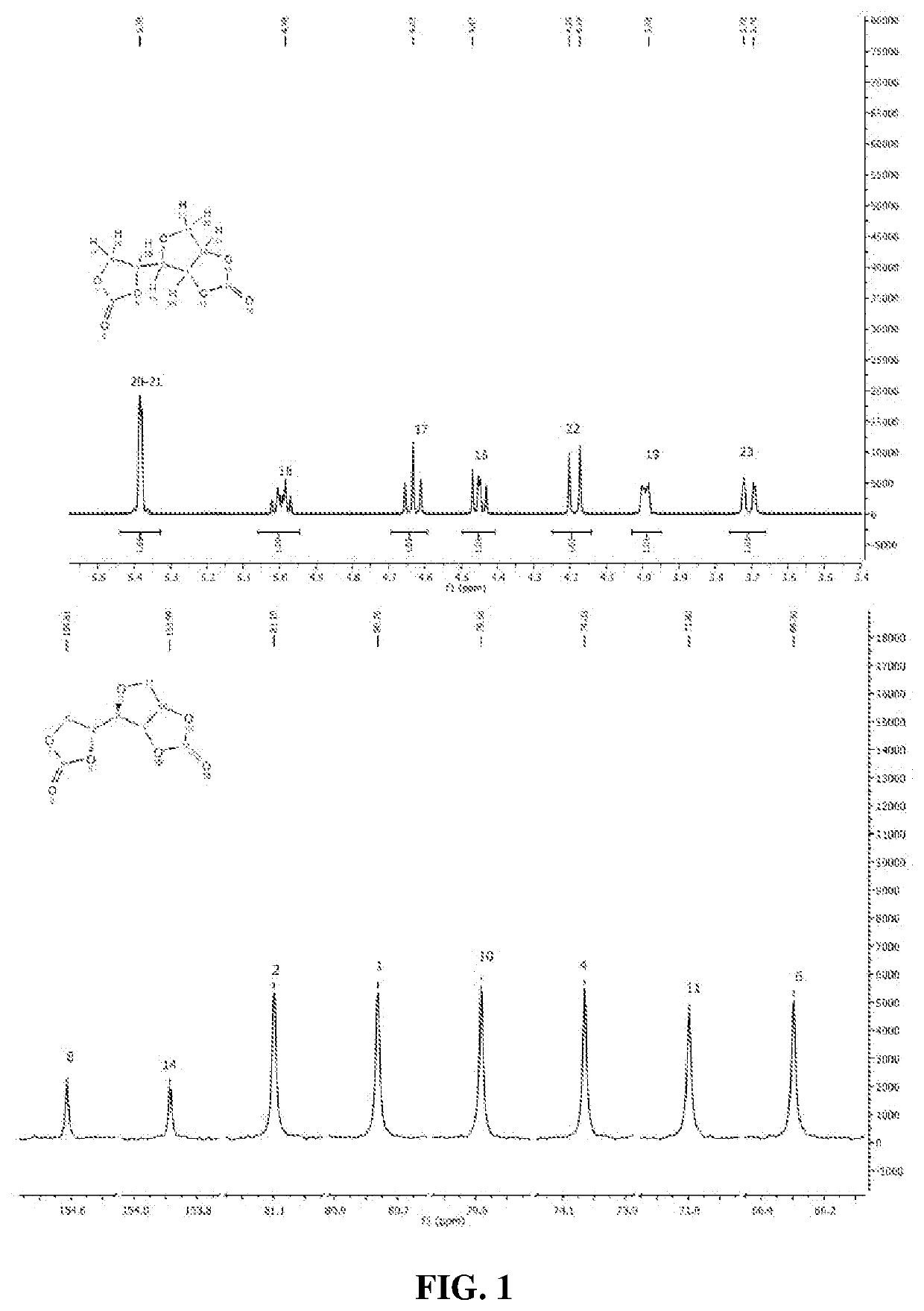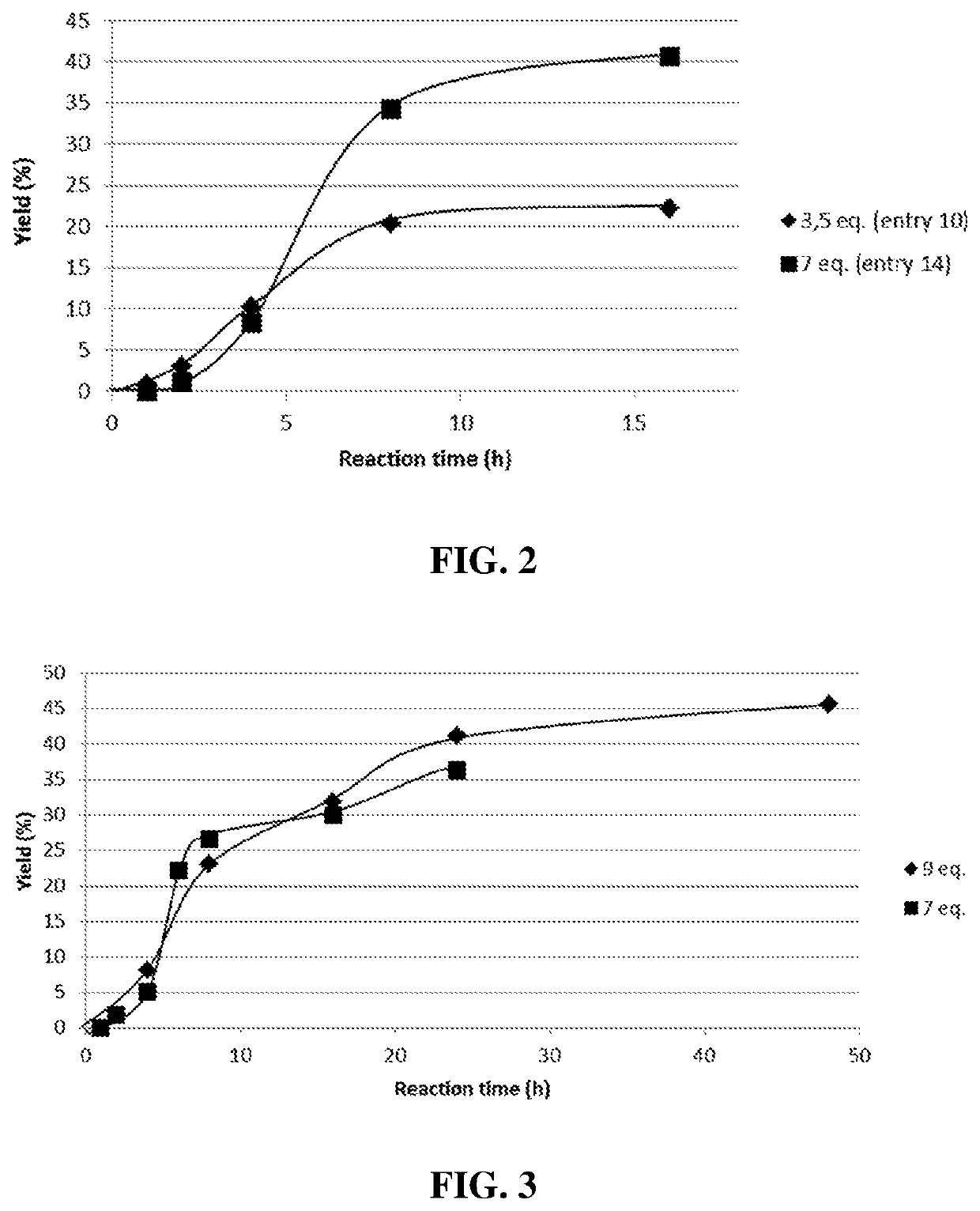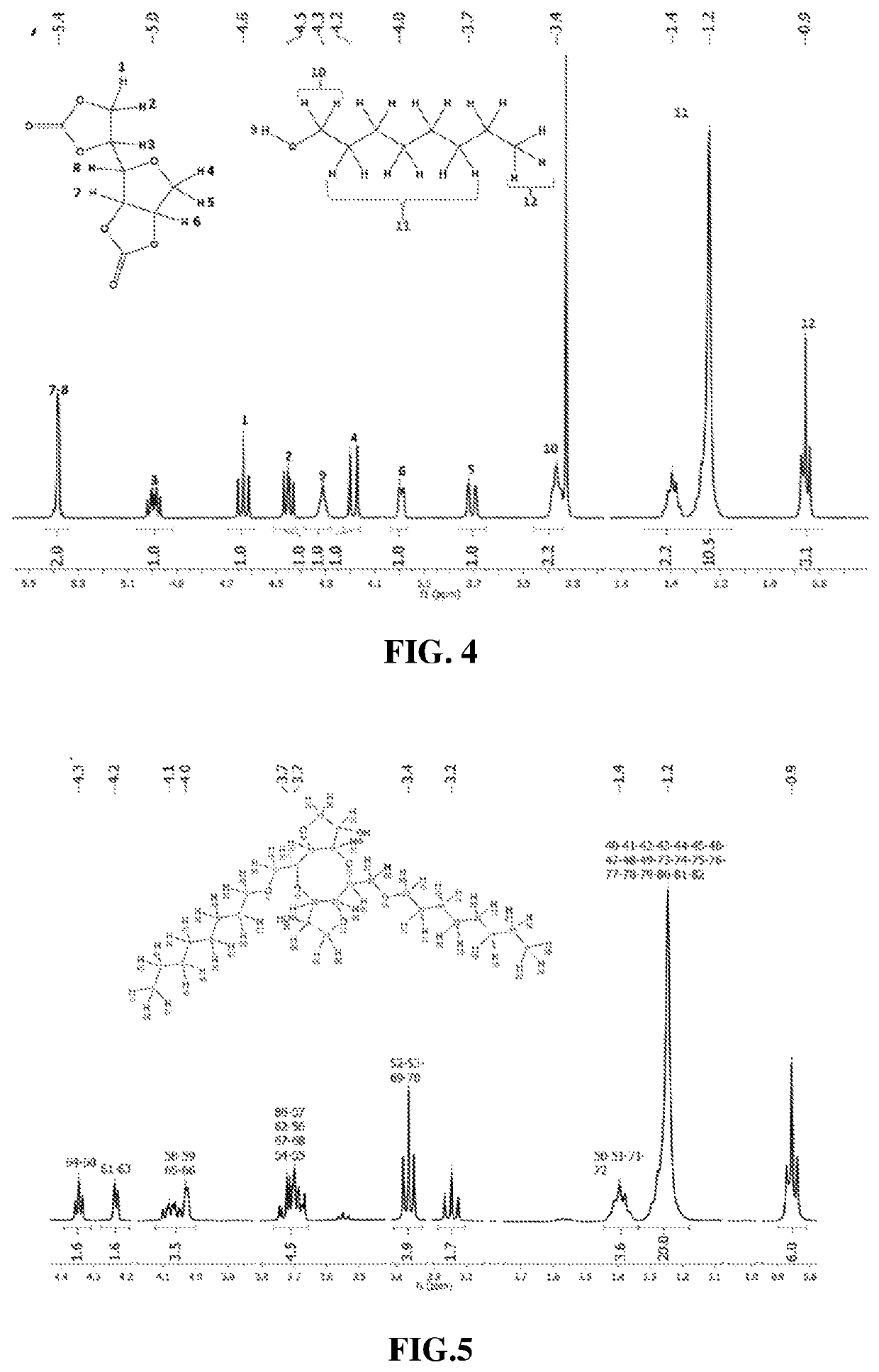Process for producing a five-membered polycycloaliphatic carbonate
- Summary
- Abstract
- Description
- Claims
- Application Information
AI Technical Summary
Benefits of technology
Problems solved by technology
Method used
Image
Examples
example 1
D-Sorbitol Based Bis-Cyclocarbonate Synthesis
[0161]Round-bottom flask equipped with a distillation bridge or vigreux fractionating columns or reflux devise was charged one molar equivalent of D-sorbitol, 5% molar equivalent toward D-sorbitol of catalyst choose between TBD, DBU, BTPP, KOH, NaOH, K2CO3, TTIP, TNBT or stannous octoate (Sn(oct)) and different amounts of DMC comprise between 3.5 to 18 molars equivalent toward D-sorbitol. The mixture was stirred and heat to 75° C. for 16 to 48 h (table 2). At the end, the media was cooled down at room temperature and 10 mL of distilled water were added to precipitate the product. Reaction products were filtrated over 0.45 μm polyvinylidene fluoride (PVDF) membrane and washed with distilled water then dried under vacuum at 50° C. overnight. One reaction per point was made to calculate product yield for kinetic study. In order to have a constant DMC flow rate and to continuously feed the reaction, a syringe driver was used (Fischer Scientif...
example 2
ed D-Sorbitol Based Bis-Cyclocarbonate Synthesis
[0162]A 50 mL round-bottom flask equipped with a distillation bridge was charged with one molar equivalent of D-sorbitol and four molar equivalents of EC. The mixture was stirred, heated to 150° C. and maintained under control vacuum of 23-33 mbar to remove sub-reaction product (i.e. Ethylene glycol). To follow the reaction kinetic, this reaction has been made four times for 6 h, 14.5 h, 24 h and 48 h. At the end a brown mixture was obtained. The media was cooled down to room temperature and brought back to atmospheric pressure. 10 mL of ethanol were added and the mixture was heated until full dilution in ethanol. The mixture was then poured into a beaker and let two days at 4° C. for crystallization of the corresponding product. Brown crystals are obtained and recovered by filtration. These brown crystals were finally washed with glacial acetic acid to obtain white crystal.
example 3
olyethers Synthesis
[0163]A 50 mL round flask was charged with different molar ratio of D-sorbitol based bis-cyclocarbonate and 1-octanol at different temperatures in a range of 90° C. to 150° C. for 24 h with 0.7 or 5 mol % toward bis-cyclocarbonate of K2CO3 as catalyst (Table 3). 1 mL of dimethylsufoxide was added as solvent then the flask was closed with septum, flush under argon for 10 minutes before launching. During all the reactions, the septum was pierced with a needle to evacuate gaseous subsidiaries products (sub-product) induced by reactions. The end reaction media was a dark product. In main cases, the product obtained was liquid and thus precipitated in 50 mL of toluene, when solid, the product was washed in 50 mL of water.
PUM
| Property | Measurement | Unit |
|---|---|---|
| Temperature | aaaaa | aaaaa |
| Temperature | aaaaa | aaaaa |
| Molar mass | aaaaa | aaaaa |
Abstract
Description
Claims
Application Information
 Login to View More
Login to View More - R&D Engineer
- R&D Manager
- IP Professional
- Industry Leading Data Capabilities
- Powerful AI technology
- Patent DNA Extraction
Browse by: Latest US Patents, China's latest patents, Technical Efficacy Thesaurus, Application Domain, Technology Topic, Popular Technical Reports.
© 2024 PatSnap. All rights reserved.Legal|Privacy policy|Modern Slavery Act Transparency Statement|Sitemap|About US| Contact US: help@patsnap.com










